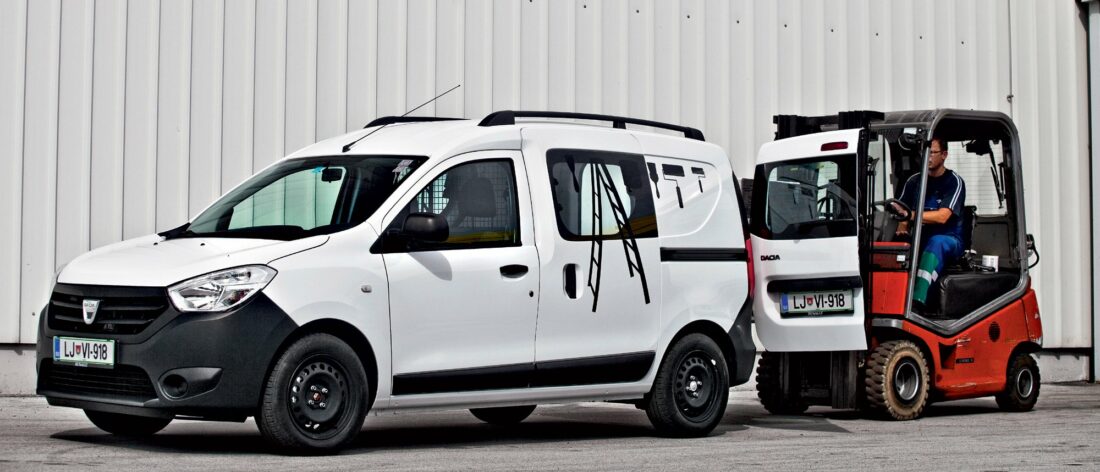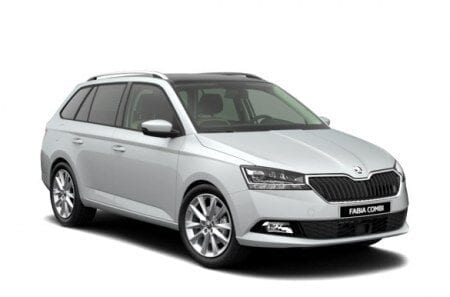
Test Brief: Dacia Dokker Van 1.5 dCi 90
And when we take on the role of chief plumber, locksmith, carpenter, painter, and electrician, we first look at the cost of buying a car. This is the first step: how much will the car cost me a month, a year, maybe five years, when the time comes to replace it after 300.000 km. Admittedly, we rechecked the price first because it took our breath away.
You can get the most basic Dokker for just € 7.564 if we added discounts to the price at the time of inquiry.
And if we deduct one more tax when we deliver the car to the company, it really is a force to be reckoned with. But it was a completely basic model, for which they actually bought a car by meters. However, this Dokker had Ambiance equipment fully equipped with an electric package, with glazed side doors, manual air conditioning, reverse sensor, car radio with CD and MP3 player, navigation system with Bluetooth connectivity for hands-free calling, front and side driver's airbags. and navigator, and, perhaps most importantly, a payload of 750 kilograms and the most powerful and economical 1.5 dCi engine with a capacity of 90 "horsepower", which in tests consumed an average of 5,2 liters of diesel fuel per 100 kilometers. The price for such an equipped Dacia Dokker van thus increased to 13.450 euros, which, of course, is not so cheap anymore, but, on the other hand, every master should also clarify whether he really needs all this equipment.
The large trunk (of course also due to the fact that it does not have a back bench) holds 3,3 cubic meters of cargo, which can be attached using eight mounting "rings". The loading width of the open side sliding door is 703 millimeters, which is supposedly the highest in its class, and the rear asymmetric double doors, which reach 1.080 millimeters wide, also open wide. The Dokker Van can easily store two Euro pallets (1.200 x 800 mm). The width of the cargo space between the inner sides of the fenders is 1.170 millimeters.
When we talk about driving performance, we certainly cannot discuss the excellent road position or the incredible accelerations that pin your back to the seat back, which ... Yes, you guessed it, this is not a sink, but large and comfortable enough to fit, you quickly turn it on, and your butt won't fall off when you need to drive to the other end of Slovenia to "assemble" a new kitchen. That said, we can say that there is no annoying bouncing in an empty car, but it rides pretty well, and best of all when loaded with about 150 kilograms of cargo.
The plastic built into the Dokker is by no means the latest fashion hit in the automotive industry. It is difficult, but at the same time very insensitive to rough treatment. When the inside gets dirty, you wipe it gently with a damp cloth and the inside is like new again, even if you've ever accidentally rubbed it with a Frenchie or dirty hands.
Finally, they also have a Kangoo for similar purposes in the Renault group. This one is, of course, a little more modern equipped and designed according to the latest standards (especially in the latest generation when they work with Mercedes), but when asked if this is the same base of the car, the answer is clear. No, these are two completely different cars. But about Kanggu Wan more than ever.
Text: Slavko Petrovčič, photo by Saša Kapetanovič
Dacia Dokker Minibus 1.5 dCi 90
Basic data
| Sales: | Renault Nissan Slovenia Ltd. |
|---|---|
| Base model price: | 7.564 € |
| Test model cost: | 13.450 € |
| Calculate the cost of auto insurance | |
| Acceleration (0-100 km / h): | 12,5 with |
| Maximum speed: | 162 km / h |
| Mixed flow ECE: | 5,2l / 100km |
Technical information
| engine: | 4-cylinder - 4-stroke - in-line - turbodiesel - displacement 1.461 cm3 - maximum power 66 kW (90 hp) at 3.750 rpm - maximum torque 200 Nm at 1.750 rpm. |
|---|---|
| Energy transfer: | engine-driven front wheels - 5-speed manual transmission - tires 185/65 R 15 T XL (Continental EcoContact). |
| Capacity: | 162 km/h top speed - 0-100 km/h acceleration in 13,9 s - fuel consumption (ECE) 5,2/4,5/4,1 l/100 km, CO2 emissions 118 g/km. |
| Mass: | empty vehicle 1.189 kg - permissible gross weight 1.959 kg. |
| External dimensions: | length 4.365 mm – width 1.750 mm – height 1.810 mm – wheelbase 2.810 mm – trunk 800–3.000 50 l – fuel tank XNUMX l. |
Our measurements
| T = 22 ° C / p = 1.020 mbar / rel. vl. = 67% / odometer status: 6.019 km | |
| Acceleration 0-100km: | 12,5s |
|---|---|
| 402m from the city: | 18,5 years ( 119 km / h) |
| Flexibility 50-90km / h: | 8,6s (IV.) |
| Flexibility 80-120km / h: | 16,4s (V.) |
| Maximum speed: | 162km / h (V.) |
| test consumption: | 5,2 l / 100km |
| Braking distance at 100 km / h: | 40,6m |
| AM table: | 42m |
We praise and reproach
price of basic versions
fuel consumption
tape
durable plastic inside
operation of the multimedia system (navigation, bluetooth connection, telephony, CD, MP3)
loading capacity and size of the cargo compartment
poor sound insulation
side mirrors with manual adjustment
we missed the trinket box
